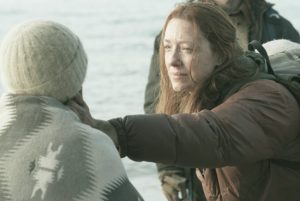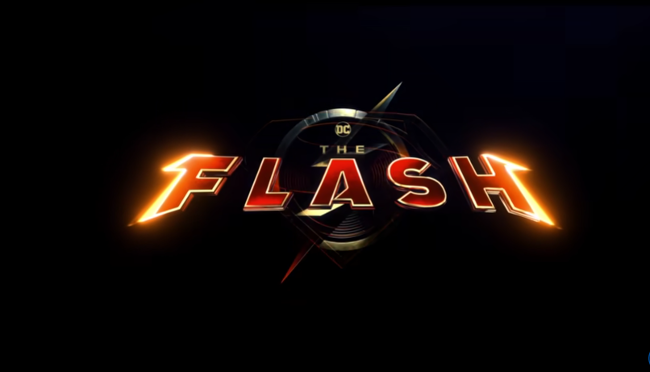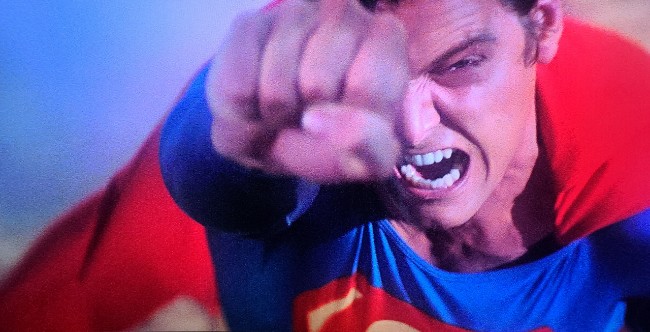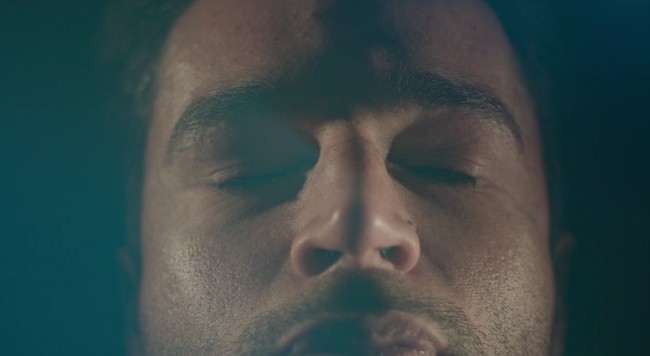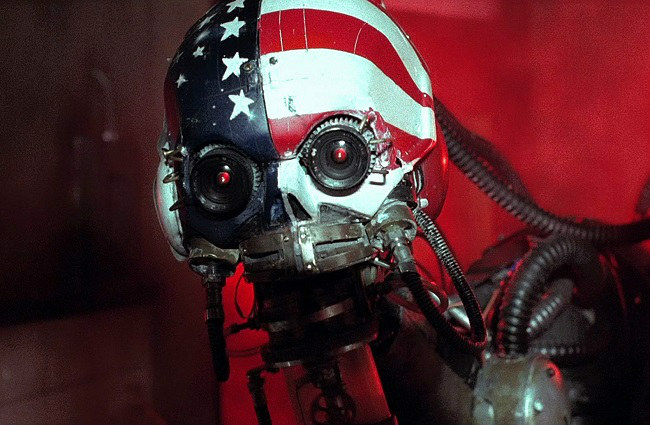Road Trip In The Movies
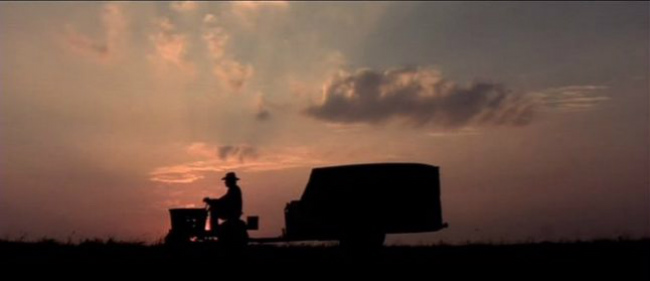
It’s road trip season again and another round of road trips in the movies are looked at and reviewed. One is an older movie, one is about an old man, and one is set in a future none of us want to see.
It’s a safe bet to make, absent of any freak snow storm, Summer is settling quite nicely in the United States. Technically, Summer starts June 21 but with tempatures across the United States hitting averages in the high 80s it would seem Spring took the year off. With the warm weather our thoughts once again turn to the age old ritual of hitting the open road and taking a road trip to anywhere. As much as we would love to take each and everyone of you on our next wandering it’s just not possible. Instead, let’s take a look at a few of our favorite road trip movies.
HARRY AND TONTO
Some of us plan our road trips out to the tiniest detail leaving no margin for error. Some of us go on the spur of the moment and yet others, like Harry, are forced to go on the road because they have no other options.
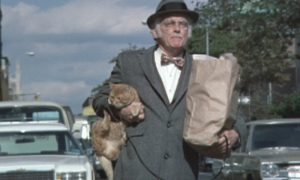
Director Paul Mazursky (Scenes From a Mall) opens Harry and Tonto concentrating on the claustrophobia of the big city. People walking up and down the streets are shown bouncing off each other in a hurry to get wherever they are going. More importantly, the inhabitants he focuses the lens on are senior citizens. It’s an old city inhabited by old people and in the center is Harry (Art Carney, The Honeymooners) .
It would have been easy to paint Harry as a scared retiree living in the big city. However, Mazursky’s movie paints Harry as anything but a scared retiree. He’s seen the city change and he’s been mugged more than once by the same mugger. Harry may be practical and maybe a little stubborn, but not scared. Harry’s stubbornness and his cat Tonto is what sends him on his country trip.
It wasn’t Harry’s original plan to hit the open road to California. The original plan was to go by plane. However, that was derailed when airport security wanted to put Tonto through the airport’s x-ray machine. The next plan was to take a bus. Alas, Tonto ran off during a bathroom break.
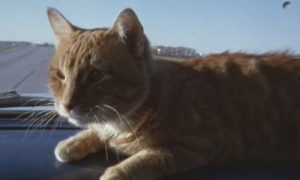
From there Harry and Tonto go on the road trip Harry wanted to take all his life, but was unable to because life, as they say, got in the way. Along the way, Harry and Tonto meet some unusual characters. There’s Ginger, the teenage hitchhiker, who runs off with Harry’s grandson Burt Jr. He gets a healing ceremony from Sam Two Feathers (Chief Dan George, The Outlaw Josey Wales) who he meets in the Las Vegas drunk tank after being caught urinating in public. He even gets a little “company” from Stephanie the Vegas hooker.
Released roughly five years after Easy Rider, Harry and Tonto is the antithesis of the nihilism found in Easy Rider. You won’t find any of the anti-establishment themes in Harry and Tonto found in Easy Rider nor will you find characters living on the edge or the anger that courses through the Easy Rider.
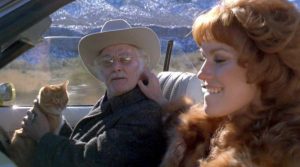
Harry and Tonto came out during the early days of the United State’s withdrawal from Vietnam, but deep in the controversy coming out of President Nixon’s White House. Early in the movie Harry asks the corner newspaper salesman “Who’s president this week?” The vendor answers, “Who cares?” With dark days behind the United States and gloomy days ahead, Harry and Tonto greet this new America with open eyes and heart. Harry doesn’t judge anyone he encounters on his trip to California. In fact, he learns just as much from them as do they from him. By the time he reaches California he’s ready for a fresh start to the next chapter in his life.
Art Carney won the Best Actor Oscar for his role as Harry. The achievement is quite impressive when looking at the other films and actors nominated in the same year. Carney received the award over Al Pacino (The Godfather II), Albert Finney (Murder on the Orient Express), Dustin Hoffman (Lenny), and Jack Nicholson (Chinatown).
THE PUFFY CHAIR
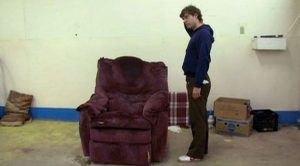
Jay and Mark Duplass have been called the kings of mumblecore cinema. What is mumblecore? Basically, it’s a silly name for low budget film making. You wouldn’t be wrong in confusing a movie in the mumblecore genre with one of the many “lost footage” movies. Shaky camera shots for no other reason than to have a shaky camera, ridiculously extreme close ups, and bad camera angles are hallmarks of both genres. All these bad movie making options are on display in The Puffy Chair.
The Puffy Chair, written and directed by the Duplass brothers, follows Josh (Mark Duplass), girlfriend Emily (Katie Aselton, real life wife of Mark Duplass), and Josh’s brother Rhett as they travel from Atlanta to New York to pick up a purple puffy chair bought on Ebay.
Unlike traditional road movies where the main character or characters meet other people along their travels the trio make a pretty straight line from Georgia to New York. The Puffy Chair is more about what Josh, Emily, and Rhett learn about themselves and each other while on the road trip than the road trip itself. The one notable stop results in Rhett being married for a few hours before the marriage ends. The fallout of Rhett’s marriage highlights problems in Josh and Emily’s own long relationship.
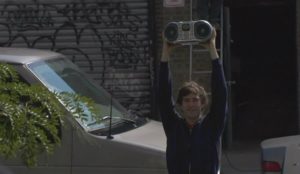
One of the better aspects of the mumblecore genre are the performances. More often than not the performances are more natural compared to movies in other genres. When Emily has a random breakdown, for unknown reasons, you actually believe Katie Aselton is having a breakdown. Sure, you don’t know why but it feels authentic and Duplass’s Josh comes off as a guy who doesn’t really know if he wants to marry Emily. As bad as the direction, or lack of, is in The Puffy Chair the acting is that much better.
(One very cool note: The Duplass’s real parents play Josh’s onscreen parents and have producing credits on the film.)
THE STRAIGHT STORY
Most road trippers take their journey by car, motor cycle or even motorhome. Alvin Straight on the other hand took his road trip from Laurens, IA to Mt. Zion, WI on a John Deere riding lawnmower.
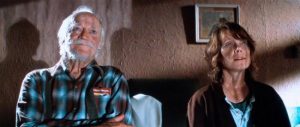
Seventy three old Alvin Straight (Richard Farnsworth) starts his road trip after learning his estranged brother Lyle (played by Harry Dean Stanton) has had a stroke. Unable to drive himself and unwilling to have anyone else drive him, but needing to reconnect with his brother Alvin goes by the only mode of transportation he has- a green John Deere riding lawnmower.
Like Harry, Alvin meets a lot of people along his 300 mile trip to Mt. Zion. Although you won’t find a Log Lady or a Frank Booth, the supporting cast is just as important to the movie as Alvin. It’s through the stories told to the supporting cast we learn more about Straight, his past, and his family. By the end of the movie the viewer has as much invested in his trip as Alvin. We’re relieved to find Lyle is still alive and the breach between the two brothers may be healed.
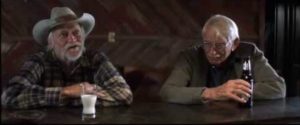
David Lynch directing a movie distributed by the Walt Disney Company seems like something right out of a Lynch film, or at the very least a Cronenbergh film. But that’s exactly what happened with The Straight Story and it’s only against Lynch’s tapestry of other movies that the Disney distributed The Straight Story seems odd. In reality, The Straight Story is Lynch’s most touching movies to date.
Although Richard Farnsworth didn’t win the Academy Award for Best Actor, that honor would go to Kevin Spacey for American Beauty, Farnsworth did become the oldest person to be nominated for Best Actor.
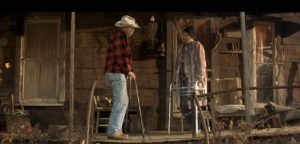
THE ROAD
Sometime in the future the unimaginable happens. Nuclear War has devastated the United States and left a blasted landscape and broken people in its wake. This is John Hillcoat’s The Road. It’s not a paradise. It’s not a place you want to visit and it’s not a place you would want to take a road trip. However, that’s exactly what the Man (Viggo Mortensen, Eastern Promises) and the Boy (Kody Smit-McPhee, Let Me In) have to do if they want to survive.
The Man, who is slowly dying, believes their future lies at the sea. In order to reach it they have to follow the road. The road is dangerous, but any other option is more dangerous for the father and son. Even along the road the duo meet fellow travelers-rapists, criminals, highway men, and cannibals. These aren’t the kind of people you want to meet in the best of times let alone in a time when day to day survival is fight and a struggle.
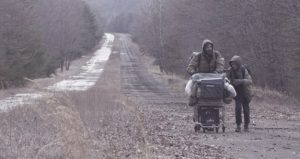
Most of the color has been stripped from the movie. Different shades of black and grays and whites dominant the movie. The lack of color in the movie serves to highlight the misery of the world the Man and Boy travel through. It’s apparent from the start this isn’t The Walking Dead’s post-apocalyptic America where there’s always a glimmer of hope. In fact, there’s very little hope to be found in The Road.
There’s very little hope in The Road, but there is some hope. The bond between father and son runs deep. It’s clear the Man loves his son more than anything else in the world and he will do anything to protect. The boy for his part loves his father to the point where he doesn’t he want to leave him after he has passed on. The Mother he meets at the end of the movie offers one last glimmer of hope. She offers the boy a family and a place to belong. In the world of The Road family may be the most important thing left to humanity.
